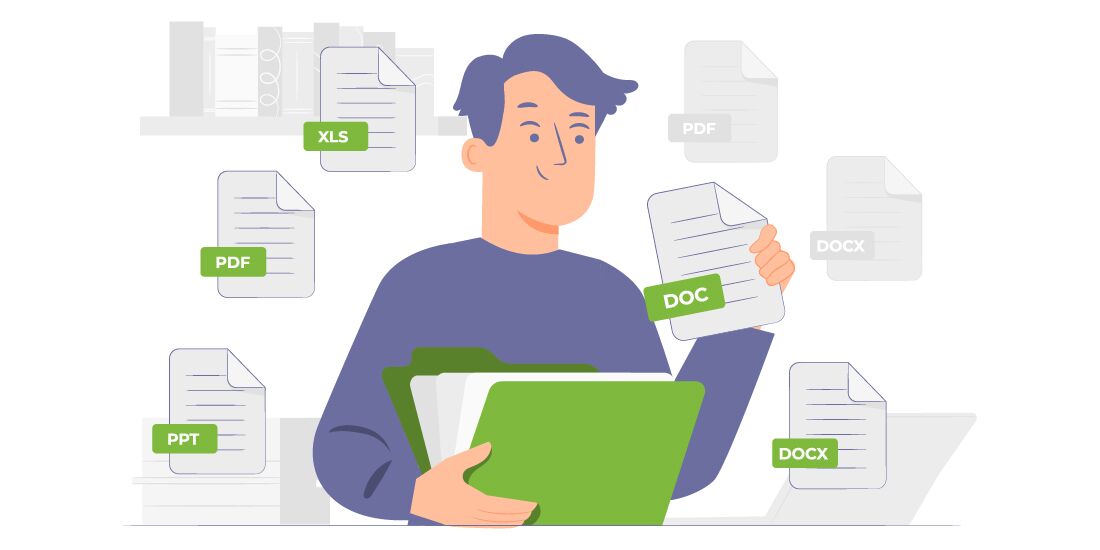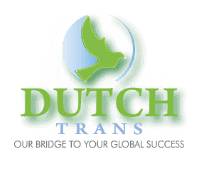
How to Successfully Translate Dutch to English in PDFs
10 Apr How to Successfully Translate Dutch to English in PDFs
Are you faced with the task of translating a Dutch PDF document to English? Translating PDFs can be a daunting task, especially when dealing with languages that are not your native tongue. In this blog post, we will explore the challenges of translating Dutch to English in PDFs and provide you with tips and tools to successfully complete the task. Whether you are using Adobe Acrobat or online translation tools, we have got you covered.
Understanding the Challenges of PDF Translation
When embarking on the journey of translating a Dutch PDF to English, one immediately encounters several inherent obstacles unique to the PDF format. Unlike more flexible formats like DOCX, PDFs are often seen as ‘final’ versions of documents – designed more for viewing and sharing than editing. This intrinsic characteristic poses a significant challenge, as direct manipulation of text within a PDF is not as straightforward. The static nature of PDFs means that any attempt to alter text not only requires specialized tools but also a keen eye to retain the document’s original layout and formatting. Such preservation is crucial, as it ensures that the translated document mirrors the professionalism and coherence of the original. This task becomes even more complex when dealing with documents that include a mix of text, images, and other non-text elements, as the translation process needs to account for these various components without disrupting the overall design. Consequently, understanding and navigating the complexities of PDF translation demands a thoughtful approach, incorporating both technical solutions for text extraction and editing, as well as a meticulous attention to detail to maintain the integrity of the document’s presentation.
Preparing Your Dutch PDF for Translation
The initial step towards a successful Dutch to English PDF translation involves meticulously preparing your document. This preparation is paramount, as it lays the foundation for a smoother and more effective translation process. Begin by employing OCR (Optical Character Recognition) technology, a powerful tool designed to extract text from your PDF. OCR software scans your document, identifying and converting printed or handwritten text into machine-readable text data. This step is especially crucial for documents that are scanned images of text, as it transforms them into a format that can be edited or translated.
Another strategy is converting your PDF into a format that is inherently more amenable to edits, such as a Word document. This conversion process can often be achieved through the use of various online tools or software designed specifically for this purpose. By transforming your PDF into an editable format, you provide yourself the flexibility to make adjustments, corrections, or additions throughout the translation process.
Ensuring that the text within your PDF is crystal clear and devoid of ambiguities is another critical component of preparation. This clarity not only facilitates the translation process but also enhances the accuracy of the translation itself. By taking these preparatory steps seriously, you effectively set the stage for a seamless translation journey, from Dutch to English.
Using Adobe Acrobat for Dutch to English PDF Translation
Adobe Acrobat emerges as a robust ally in the realm of translating Dutch PDF documents into English. This platform is equipped with a built-in translation feature, simplifying the process for users who need to translate snippets or whole sections directly within their PDF files. By enabling the selection of text blocks for immediate translation, Adobe Acrobat caters to those in need of quick, on-the-spot conversions without leaving the document environment. However, it’s worth noting that this feature is best suited for minor translations.
For documents that span several pages or contain complex terminologies, users might find that supplementing this method with more comprehensive tools becomes necessary. Leveraging Adobe Acrobat’s capabilities, therefore, offers a convenient starting point for translation endeavors but may need to be part of a broader strategy, incorporating additional online tools or professional services for extensive or specialized documents. This approach ensures not only the accessibility of immediate translations but also the availability of options to enhance accuracy and coherence for larger projects.
Online Translation Tools for Dutch to English PDFs
Navigating the realm of online translation tools unveils a plethora of options designed to bridge the gap between Dutch and English in PDF documents. These platforms operate on advanced machine translation technology, capable of processing extensive texts swiftly to yield a primary translation. The convenience and speed offered by these tools make them an attractive choice for users seeking immediate insights into the content of their Dutch PDFs.
It’s essential to approach these translations with a critical eye. The nature of machine translation means that while the gist of the document can be captured, nuances may be lost, and errors in syntax or terminology can occur. This is particularly true for texts that contain specialized jargon or cultural references unique to the Dutch language.
To counteract these limitations, some online tools provide functionalities that allow for customization or learning from corrections over time. This adaptive feature can improve the quality of translations for specific types of documents or recurring themes.
Furthermore, integrating these tools with a thorough review process significantly enhances the translation’s overall quality. This might involve cross-referencing with reliable sources or consulting native speakers for ambiguous phrases. The goal is to strike a balance between leveraging the efficiency of online tools and ensuring the translation’s accuracy and readability, thereby making the translated PDF a true reflection of the original in both content and tone.
Professional Translation Services for Accurate Results
Opting for professional translation services elevates the quality and precision of translating Dutch PDF documents to English. These services deploy skilled linguists who are not only fluent in both languages but also have a deep understanding of the cultural nuances and technical terminologies involved. This expertise is particularly beneficial for documents that contain specialized content or for instances where the stakes of accurate translation are high, such as legal papers, technical manuals, or scientific research.
Professionals can navigate the complexities of the source material, ensuring that the translated document aligns with the intended message and tone. This is crucial for maintaining the document’s integrity and ensuring that it resonates correctly with its intended audience. Moreover, professional translators are adept at working within the constraints of the PDF format, preserving the original layout and formatting to the greatest extent possible, which is vital for documents where presentation matters.
While enlisting professional services might require a larger investment compared to automated tools or self-translation efforts, the value added through their expertise cannot be understated. They offer a level of precision, reliability, and peace of mind that is indispensable for critical translations. Engaging with professionals means entrusting your documents to individuals who commit to delivering translations that are not only linguistically accurate but also culturally and contextually appropriate.
Post-Translation Editing and Proofreading
After completing the translation from Dutch to English in your PDF, a critical next step is the editing and proofreading phase. This stage is pivotal for enhancing the quality of your translated document. During this process, meticulously examine the text for grammatical inaccuracies, typographical errors, and any instances of mistranslation. It’s also essential to ensure that the translation accurately conveys the nuances and intended meanings of the original text. Consider employing the services of a native English speaker for proofreading, as they can offer valuable insights into the natural flow and readability of the language. Additionally, pay attention to maintaining the original document’s layout and formatting, as these elements contribute significantly to the professional appearance of your translated PDF. This thorough review process is crucial for eliminating errors and refining the document to meet high standards of clarity and precision.
Best Practices for Dutch to English PDF Translation
Adhering to a set of best practices can significantly enhance the quality and accuracy of your Dutch to English PDF translations. One critical step is engaging in thorough preparation of the document, which includes employing OCR technology to digitize text and possibly converting the PDF to a more editable format. This preparation sets a solid foundation for the subsequent translation efforts.
When using Adobe Acrobat or any online translation tools, always be aware of their limitations and strengths. For quick translations of small sections, Adobe’s built-in features may suffice. However, for more extensive documents, consider leveraging more comprehensive online tools that offer advanced machine learning capabilities for better accuracy over time. Regardless of the tool used, maintain a critical perspective on the output, knowing that machine translations may require further refinement.
For documents of high importance or those containing specialized terminology, opting for professional translation services is advisable. The expertise of professional linguists can ensure not only linguistic accuracy but also the preservation of cultural and contextual nuances.
Finally, the post-translation phase is equally vital. Invest time in thorough editing and proofreading to catch any errors and ensure that the translation reflects the original’s intent accurately. It might be beneficial to involve a native English speaker in the proofreading process to ensure the language’s natural flow and readability. Also, keep a keen eye on the layout and formatting to ensure the translated document maintains the professional look of the original.
Following these best practices will significantly contribute to producing a Dutch to English PDF translation that is not only linguistically accurate but also culturally sensitive and professionally presented.
FAQ’s
What are the primary challenges in translating Dutch PDF documents to English?
The main challenges include retaining the original layout and formatting, accurately translating technical terms and idioms, and dealing with scanned PDFs that are not text-searchable. Optical Character Recognition (OCR) technology can help convert scanned documents into editable text, but may require proofreading for errors.
Are there any specific tools recommended for translating Dutch PDFs to English?
Yes, several tools can be effective, including Adobe Acrobat for OCR and PDF editing, and online translation services like Google Translate for preliminary translations. For more accurate and context-sensitive translations, professional translation software like SDL Trados or services from certified translators are recommended.
How can I ensure the translation maintains the original PDF's formatting?
Using PDF editing software like Adobe Acrobat or a professional DTP (Desktop Publishing) tool such as InDesign can help maintain formatting. These tools allow you to overlay translated text on the original layout. However, it might require manual adjustment to ensure the layout matches the original design closely.
What steps should I take to verify the accuracy of the translated document?
After translating, it’s crucial to have the document reviewed by a native English speaker familiar with the document’s subject matter. This can help identify any inaccuracies or awkward phrasings. For legal or official documents, consider hiring a certified translator who can provide a certificate of accuracy.
How do I handle technical or industry-specific terminology during the translation?
For technical or specialized documents, using a translator with expertise in the relevant field is essential. Glossaries and translation memories can also be beneficial, ensuring consistency and accuracy in the use of terminology. Some translation software allows you to build and use custom glossaries for specific projects.

